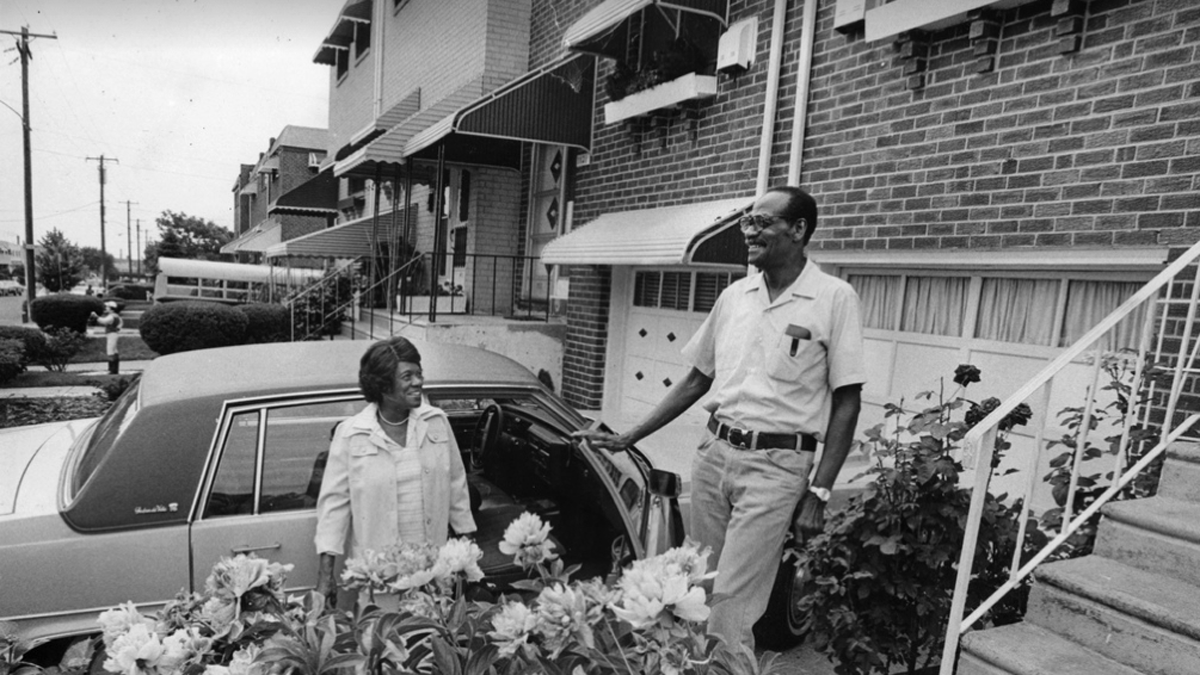The other protests of 1964 and the North Philly neighborhood spared by the riots
Listen
(Image courtesy of Temple University Urban Archives)
All week we’ve been bringing you the story of the 1964 riots in North Philadelphia.
That unrest sprang up amid years of more peaceful protest, for social and economic justice for African-American residents. And while the riots devastated parts of North Philly, one new urban housing development a few blocks away was largely spared.
It wasn’t just one incident that started the upheaval, discontent had been gathering for years, like dry kindling. So a dispute over a traffic stop and an altercation with police — and wild, untrue rumors about police assaulting a pregnant African-American woman — were only the tipping point, the spark that led to three days of civil disobedience, street violence and property destruction.
“I had never seen a riot before,” said Music entrepreneur Ira Tucker Jr. “And there was some question whether this was a riot or a rebellion”
Tucker grew up in the area and has vivid memories of community activism and going to civil rights protests with his family.
“When we saw our parents out there on the line we knew we were doing the right thing. And it was something that you did with your parents that you never did before and I don’t think since then it’s been done either,” he said. “I mean, to go out on a protest line with your mom and your pop with you and you’re walking around with signs on and protesting something. Especially when they built Strawberry Mansions High School or Middle School they didn’t have any Black people working on it at all. And so we went there and protested, with bullhorns and signs and laid down in front of tractors — whatever it took.”
Along Columbia Avenue, later renamed for civil rights activist Cecil B. Moore, business owners, said Tucker, backed the marches and peaceful protest.
“Those were the people who put up the money for the signs, put up the money for us to do whatever we needed to do. When we were in the struggle people were concerned about a collective cause. It was about trying to make things better. And the over killing that they have today just did not exist back then. Our focus then was more about trying to improve things.”
When the riots started some of the same stores were looted and destroyed. Columbia Avenue never saw many of those merchants again, and shopping in what was once a thriving corridor of black and Jewish owned stores, nearly disappeared.
“I actually remember being on the porch and hearing about the riots,” said Karen Warrington in a 2012 interview. She’s an artist, educator and media personality that has been living in the North Philadelphia Yorktown neighborhood since it was founded in the early 1960’s. “But Broad St is almost like a firewall barrier. So if you are on the East side of Broad Street you are not necessarily in the heart of what’s going on the west side”.
Yorktown was built over 10 years on 150 acres as part of an urban renewal plan, to offer a middle-class neighborhood and home ownership for African-American families. It was a suburban island in the city.
“So that rebellion happened as a result of some conflict with police and there were a number of stores there that subsequently were burned and ravaged. Yorktown would not have been the object of that kind of reaction because we didn’t have stores at all in our community,” Warrington said.
Yorktown followed the model of suburban Levittown. Its 650 houses are mostly semi-detached, with one-car garages and a small front lawn and gardens. It’s still is a thriving community framed by Girard Ave. Cecil B. Moore Ave. and 12th and Broad Streets. It has mostly remained in the hands of the original buyers. Influential people such as former Mayor John Street call it home.
But on the other side of Broad street, many of the families who were displaced by the 1964 riots relocated to other neighborhoods or stayed in decaying buildings. Today, the most visible presence in this part of North Philadelphia is the ever-expanding Temple University. The housing and business needs of the Temple community are driving the economic, cultural and political dynamics of the area.
WHYY is your source for fact-based, in-depth journalism and information. As a nonprofit organization, we rely on financial support from readers like you. Please give today.

